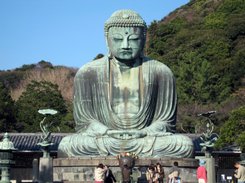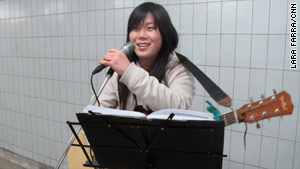
Travelers at a security checkpoint at Reagan National Airport in Washington. Jason Reed/Reuters
January 24, 2010
Practical Traveler
Security Ahead? Pack Patience
By MICHELLE HIGGINS
SINCE the Transportation Security Administration began tightening security in response to the Christmas Day bombing plot, travelers have faced increasingly rigorous screenings at airports. They’ve been forced to cope with extra bag checks, closer scrutiny of their identification, and full body pat-downs that include children as well as adults.
The new measures come on top of the already arduous process familiar to any regular traveler: the ritual offering up of shoes, jackets, belts, watches, laptops, cellphones and keys. But it’s the inconsistencies in the security measures — from country to country, airline to airline and airport to airport — that have left many passengers exasperated and confused. Some say they have encountered the usual routine, while others tell of undergoing multiple screenings at various stages of the itinerary, mostly on international flights bound for the United States.
On a return flight from the Dominican Republic in early January, Carol Moon Goldberg, a retired lawyer from Elk Grove, Calif., and her family went through the usual drill at the security checkpoint. Then, at the gate, their passports were scrutinized a second time, they were patted down and their carry-on bags were unzipped and thoroughly searched. The family’s razor blades were taken before they were allowed to board, she said.
On arrival in Atlanta, the family, like nearly all international travelers, had to retrieve their checked luggage, recheck it and go through security again for the next leg of their flight. “We nearly missed our connecting flight despite having a two-hour layover,” she said.
Her advice: “Be prepared to be patient.”
More changes are expected to come to airports around the world as governments explore new security technology, including the much debated full-body scanners, which will soon be used in more American airports. Passengers traveling within the United States may notice an increase in random screenings, behavior detection officers who look for signs that passengers may be hiding something, and a wider use of tools like explosive-trace detection devices, not just at the checkpoint but throughout the airport.
For passengers, all of this means coping with an onerous, shifting security routine fraught with privacy concerns. But travelers are a resilient bunch and many are already adapting to the new realties. Here are a number of things you can do to navigate the new measures.
Learn your rights Under T.S.A. regulations, travelers may request a private area for a pat-down, which could be a separate room or an area out of the view of the general public. You can also ask for a security officer of the same sex, though you may have to wait if one is not immediately available.
Passengers who do not wish to pass through the metal detector for religious or cultural reasons can request a pat-down as an alternative. Head coverings, whether religious or not, are also permitted, though they may be subject to a pat-down search or removal in a private screening area.
Pack carefully Innocent items can actually appear to be potential threats on an X-ray image, simply by the way they’re packed. Tying up loose headphones and cellphone cords so your luggage doesn’t look like an ominous jumble of wires can help expedite screening, for instance.
Be Upfront Don’t try to hide objects that may be flagged for secondary screening, either. Jami Counter, senior director of TripAdvisor Flights, an online flight search tool, was carrying a bar of Kiehl’s soap, a gift he had received, when returning to New York from Atlanta over the holidays. He suspected the soap’s density could make it hard to identify in the X-ray machine, so he packed it at the very top of his bag.
Sure enough, an agent asked to search his bag, but the placement helped speed up the process. “Once he zipped it open and saw the soap, that was it,” said Mr. Counter. “He didn’t have to go rummaging through the bag.”
Dress for the occasion Slip-on shoes, beltless pants and bras without underwires were already common among travelers. Now, savvy entrepreneurs are offering new products to help ease the security process. Scott Jordan, a former corporate lawyer in Chicago, invented the Scottevest 10 years ago to carry and organize all his gadgets. Recently, he rebranded it for travelers as a way to avoid the tedious task of emptying their pockets for security. The 22-pocket vest, $100, can double as a carry-on of sorts for your iPod, cellphone, glasses, wallet, change, keys and other items. It may be particularly handy now that some airlines have been requiring travelers to remain seated for the last hour of the flight, without access to the overhead bins.
In the fall, Mr. Jordan said, he plans to introduce a trench coat that can hold a change of clothes and a laptop in its pockets. After passing through the X-ray machine, the jacket could convert into a messenger bag that could easily be carried and stored on the plane.
Another fashion option: the Runnur, billed as a modern alternative to the dreaded fanny pack, is a wide strap worn across the body like a bandolier or sash — bike-messenger style — that offers various pockets where you can stash your stuff. Cost: $34 at www.gorunnur.com.
Use a special laptop bag These “checkpoint friendly” bags provide a clear and unobstructed X-ray image of the laptop, allowing travelers to keep the computers in their cases at airport security checkpoints. This eliminates the hassle of having to unpack the laptop, place it in a bin and repack it at the end of the conveyor belt. The luggage retailer eBags.com sells 112 models ranging from a $30 Netpack bag to a $595 Tumi case.
Prepare the children Some of the angriest responses to the heightened security measures come from parents who have watched their children being patted down or questioned by agents. “Children who are selected for secondary screening at security or the departure gate may well be separated from parents for the first time, or be subjected to what they perceive as inappropriate behavior,” said Kyle McCarthy, editor at FamilyTravelForum.com. Explaining in advance to children what they might encounter can help avoid a meltdown at the airport. The T.S.A. offers a Kids to Kids video at tsa.gov/travelers that walks children through security procedures, from removing shoes and toiletries to stepping through the metal detector.
Ask for an explanation When Patricia Grey, 58, from Andorra in southern Europe, is flagged at security she politely asks the agent what it was that made them select her, so she can avoid a repeat incident. Last year, before a flight from Las Vegas to Park City, Utah, she was told the plastic bag that held her liquid makeup showed a chemical deposit. “Apparently when it was screened previously the scanner had left a residue,” she said. “Hence, always use a new Ziploc bag for your makeup.”
Follow the rules It may sound simple, but anyone who has been to an airport recently knows how frequently this point is overlooked. Shoes must be placed on the X-ray belt, as opposed to in a bin, to help security officers get a good look at them. Liquids, aerosols or gels must be packed in containers no larger than 3.4 ounces in one clear, quart-sized zip-top bag. A list of prohibited items is at www.tsa.gov/travelers.
Cooperation is key. “It really works both ways,” said Jurgen W. Shulze, an insurance adjuster from Milford, Pa., who recently flew from Germany to the United States.
“If some passengers were better prepared for a flight rather than arrive at the airport with a belligerent attitude, and if some of the security representatives were more sensitive to privacy issues, the whole process could be expedited.”
View Article in the New York Times
 Naengmyeon is prepared by boiling and cooling off noodles as a 'sari' (coil) and pouring seasoned and iced water into the bowl, and then have garnishes be laid on top of them. Among the materials of noodle, buckwheat can make the most delicious cold noodles, i.e. kneading buckwheat flour and pressing them in a machine to transform into noodles. Cold noodles were mainly developed in the northern area of Korea which had large harvest of buckwheat.
Naengmyeon is prepared by boiling and cooling off noodles as a 'sari' (coil) and pouring seasoned and iced water into the bowl, and then have garnishes be laid on top of them. Among the materials of noodle, buckwheat can make the most delicious cold noodles, i.e. kneading buckwheat flour and pressing them in a machine to transform into noodles. Cold noodles were mainly developed in the northern area of Korea which had large harvest of buckwheat. 






 2010-2-10
2010-2-10 
 1:00 p.m.
1:00 p.m.  1:20 p.m.
1:20 p.m.  2:30 p.m.
2:30 p.m.  4:00 p.m
4:00 p.m 





 This place had been named “Green corner” long before the first Japanese car appeared in Primorye. Since 1950s the plot of land had belonged to a forestry of the Pacific Fleet. In 1993 the area passed from the forestry hands to tenant auto dealers. Nowadays, the largest Russian market of second hand cars is situated here. At times of the highest demand the amount of cars offered here exceeded 17, 000. A car expert can wander across the “Zelyonka” market in a couple of hours. A novice can get lost there for a whole week.
This place had been named “Green corner” long before the first Japanese car appeared in Primorye. Since 1950s the plot of land had belonged to a forestry of the Pacific Fleet. In 1993 the area passed from the forestry hands to tenant auto dealers. Nowadays, the largest Russian market of second hand cars is situated here. At times of the highest demand the amount of cars offered here exceeded 17, 000. A car expert can wander across the “Zelyonka” market in a couple of hours. A novice can get lost there for a whole week.
 Boozy reverie: Kanga-an, a temple established in Kyoto by the retired Emperor Go Mizuno, now includes a one-of-a-kind bar. NICHOLAS COLDICOTT PHOTOS
Boozy reverie: Kanga-an, a temple established in Kyoto by the retired Emperor Go Mizuno, now includes a one-of-a-kind bar. NICHOLAS COLDICOTT PHOTOS


 Xinghai Square, with a total of 45,000 square meters, is located in the commercial center of Xinghai Bay. It is the largest square for public use in Dalian since the founding of the city.
Xinghai Square, with a total of 45,000 square meters, is located in the commercial center of Xinghai Bay. It is the largest square for public use in Dalian since the founding of the city.


 Once upon a time, cruise travelers were able to invite friends and relatives to visit them onboard before sailaway and see them off on their grand voyage. Then, increased security measures prompted the lines to prohibit the practice (with just a few exceptions, such as organized tours and weddings).
Once upon a time, cruise travelers were able to invite friends and relatives to visit them onboard before sailaway and see them off on their grand voyage. Then, increased security measures prompted the lines to prohibit the practice (with just a few exceptions, such as organized tours and weddings).  Priority embarkation (for passengers and their guests)
Priority embarkation (for passengers and their guests) 



